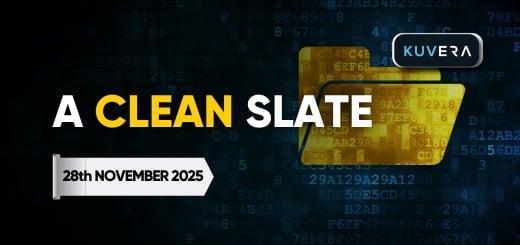tl;dr Hear the article in brief instead?

The future is no more uncertain than the present – Walt Whitman
The great American poet Walt Whitman wrote those words as part of a poem first published in his best-known collection, Leaves of Grass, more than a century and a half ago. But the words remain as true as ever.
Whitman, who also wrote the widely acclaimed poem “O Captain! My Captain!” on the death of Abraham Lincoln and “Passage to India”, may have hoped to gain fame or at least critical acclaim with “Leaves of Grass”. Instead, much of the book’s content was deemed controversial, and he was fired from his government job. Uncertainty, you see!
Anyway, we are talking about uncertainty because, well, these are uncertain times. And even when something does seem certain, there is still a little bit of uncertainty around it. Like the Reserve Bank of India’s interest rate cut this week.
The RBI lowered its policy rate by 25 basis points to 6% this week as inflation cooled. More importantly, it shifted its monetary policy stance to accommodative from neutral to support economic growth. And then, Governor Sanjay Malhotra made an extra effort to explain what this shift really signifies.
“Today’s change in stance from neutral to accommodative means that, going forward, absent any shocks, the MPC is considering only two options – status quo or a rate cut,” he said.
Why would the RBI governor go out of his way to explain what is, in theory, a widely understood change in policy stance? In central banking parlance, this is an example of moral suasion—a nudge to banks to transmit the rate cut to consumers, something they have been hesitant to do after the 25-basis-point cut in February.
This is not just about technical jargon. The implications are tangible. If you’re considering making a fixed deposit, now might be the time to act before interest rates dip further. And if you’ve taken a loan, especially one with a floating rate, your EMIs could soon come down—provided banks do their part.
Spelling out the meaning of stance was important also because there were murmurs on how long the RBI will keep injecting cash when systemic liquidity has already moved into surplus. Clearly, Malhotra doesn’t want the RBI’s efforts to be ignored. So, his message was clear: banks must respond in kind, and the RBI is prepared to do more—conditional, of course, on how macroeconomic conditions evolve. And that’s where uncertainty comes into the picture.
The global economic landscape “appears to be uncertain”, the RBI said in its policy statement. At another point, it said the recent trade tariffs by the US and retaliatory measures by other countries have “exacerbated uncertainties”. This is clouding the economic outlook across regions and posing new headwinds for global growth and inflation, it said.
Essentially, nobody knows what lies in the future. And if you have been watching Donald Trump and US politics for the past few months, just like we are, few even know what’s going on in the present!
Watch the Bonds
After two consecutive weeks of leading this newsletter with America’s reciprocal tariff drama, we took a pause—because so did President Donald Trump. Just as the tariffs were about to kick in, Trump did a volte-face and suspended the order for 90 days, with three key exceptions: China would still face a punitive tariff of 125%, and a baseline 10% tariff would remain applicable on all US imports, other tariffs such as 25% duties on steel, aluminium, and auto imports would stay.
Why did Trump change his mind? We don’t know for sure. He claimed it was because more than 75 countries reached out to the US to negotiate a solution. Others pointed to the stock market crash—something Trump had previously brushed off.
But those who claim to understand what truly gets Trump’s attention said it was US Treasury yields.
Typically, when stock markets crash, investors rush to the safety of US government bonds, considered one of the most secure assets globally. This makes their prices rise and yields fall. But this time, bond prices fell alongside stocks—an unusual and worrying trend.
The yield on the benchmark US Treasury note spiked to as much as 4.5%, marking the biggest intraday jump since 2009. If yields had continued to rise, it would have become harder for the US government to service its debt or raise fresh loans—something it would surely need to do amid economic turmoil that the country’s economy faced.
“The Bond Vigilantes have struck again,” said economist Ed Yardeni in an April 8 research note. Yardeni, who coined the term “bond vigilantes,” used it to describe investors who dump Treasuries when they disapprove of government policies.
The yields cooled after Trump hit pause on the tariffs.
While the temporary relief on reciprocal tariffs is good news for exporters, the shift in yield dynamics has likely calmed nerves in India’s bond market as well. As we’ve explained in earlier newsletters, the RBI—though it never says it outright—tends to prefer maintaining a certain yield spread between Indian and US government bonds. That spread helps ensure that foreign portfolio investors continue to favour Indian gilts over US Treasury bonds.
The pause in the tariff was announced after the monetary policy meeting. Otherwise, it could have made a case for a stronger signal on easing, although RBI governor Sanjay Malhotra did sound dovish enough.
Watch the Clouds
The shifting winds of global trade isn’t the only factor the RBI would be watching in coming months. Its decisions will also depend on India’s most critical weather phenomenon: the monsoon.
Next week, the India Meteorological Department (IMD) will release its first forecast for this year’s monsoon rains. The announcement will perhaps grab headlines and fuel debates on television, and may even move markets. But how accurate are these forecasts?
Weather, by its very nature, is difficult—if not impossible—to predict with precision. Even within the IMD’s own stated error margin of 5%, the agency has missed the mark in 14 of the last 22 years, dating back to 2003.
Why start from 2003? Because in 2002—a drought year—the IMD’s forecast was widely off the mark, prompting a revamp of its prediction model. The changes made little difference in long-range forecasting accuracy.
While the April forecast tends to be less reliable, the odds improve by May, when the IMD updates its projection. The second forecast has been accurate, again with a 5% error margin, in half the times since 2003.
This timing is also crucial, especially when considering the role monsoon plays in Indian agriculture. With a large portion of farmland still lacking irrigation, the rains largely determine the fate of the summer, or kharif, crop.
It’s in May that farmers decide whether to plant water-intensive crops like rice or opt for hardier varieties such as jowar that can withstand weaker rainfall.
Beyond the summer planting season, monsoon rains are vital for recharging soil moisture and refilling reservoirs—both critical for winter, or rabi, crops.
So, if you’re placing your bets on the monsoon forecast, it might be wise to wait a few more weeks for better odds and a lesser degree of uncertainty.
Watch the Earnings
Trump may have paused the “reciprocal tariffs” but the uncertainties created by his policies—if they can be called that—have already started affecting Indian companies. The first indication of that came from Tata Consultancy Services.
TCS, India’s largest software services exporter, kicked off the corporate earnings season this week for the fourth quarter of 2024-25. The company missed earnings expectations as its net profit for the fourth quarter ended March 31 fell 1.7% from a year earlier to Rs 12,224 crore. Its revenue rose 5.3% to Rs 64,479 crore but still lagged analysts’ estimates. The company won deals worth $12.2 billion during the quarter, down from $13.2 billion a year earlier.
The Tata Group company said that clients were delaying decision-making and rethinking discretionary projects due to the uncertainty around US tariffs. The bigger shock came when TCS said that it postponed a decision on annual salary hikes for employees because of the uncertain business environment.
TCS, like most big Indian IT companies, count the US as their largest market. These companies were hoping that after Trump’s victory as president in November last year, the US government would follow business-friendly policies that would revive clients’ confidence and nudge them to spend more on IT projects. But the exact opposite is now happening.
There is little hope now of any shift in fortunes thanks to Trump’s flip-flops on tariffs, the crackdown on immigration and other measures that have soured sentiment.
Still, TCS CEO K Krithivasan sounded hopeful. He said that the uncertainty around tariffs was likely to settle over the next few months and that 2025-26 was likely to be better than last year. Unless, of course, Trump lifts the pause after 90 days.
Market Wrap
India’s stock markets slipped for a second straight week, pulled down by uncertainties over Trump’s tariffs. Both the BSE Sensex and the NSE dropped about 0.3% each this week. This was despite the Nifty surging 1.9% and the Sensex climbing almost 1.8% on Friday after Trump paused most tariffs for 90 days. Markets were closed for Mahavir Jayanti on Thursday.
Tata Group’s fashion retailer Trent was the biggest loser, ending with losses of almost 14%, after saying revenue growth for the fourth quarter slowed. Two more Tata Group companies, Tata Steel and Tata Motors, were among the top losers. Both the companies will be affected by US tariffs since Trump hasn’t paused levies on imports of steel and automobiles.
IT stocks continued to fall on worries of a hit on their businesses because of uncertainties among clients in the US, their biggest market. TCS, Infosys, Wipro, Tech Mahindra and HCL Tech slipped more than 2% each during the week.
Larsen & Toubro and most banks also ended in the red.
Gainers were led by Hindustan Unilever, Titan and Nestle. ITC also ended higher, as did Cipla, Bajaj Finance and Eicher. PSUs including Power Grid Corp, NTPC, ONGC and Coal India gained, too. Recent entrants Jio Financial and Eternal, the parent of Zomato, ended in the green as well.
Other Headlines
- Govt raises special additional excise duty on petrol and diesel; ups LPG cylinder price by Rs 50
- Vijay Mallya loses appeal against UK court’s bankruptcy order over $1.28-billion debt
- SEBI sets up committee on conflict of interest provisions for members, officials
- RBI proposes stricter norms for lenders disbursing gold loans
- India’s goods and services exports rise 6% to $820 billion in 2024-25 from $777 billion in 2023-24
- Apple airlifts 600 tons of iPhones from India ‘to beat’ Trump tariffs, reports Reuters
- Essar Group’s GreenLine Mobility to invest $275 million to deploy LNG, electric trucks
- Food Corporation of India starts wheat procurement, strong harvest likely
- Divestment secretary urges mutual funds to invest in state-owned firms paying high dividends
- Tata Steel to cut about 20% of workforce in the Netherlands
- BPCL, Singapore’s Sembcorp form JV to develop green hydrogen, renewable energy projects
- NTPC plans to build small nuclear reactors to replace old coal-based power plants
- Titan fourth-quarter revenue expected to rise 25% on surging gold prices
- India govt exploring feasibility of permitting companies to list on London Stock Exchange
That’s all for this week. Until next week, happy investing.
Interested in how we think about the markets?
Read more: Zen And The Art Of Investing
Watch here: Investing in International Markets
Start investing through a platform that brings goal planning and investing to your fingertips. Visit kuvera.in to discover Direct Plans and Fixed Deposits and start investing today. #MutualFundSahiHai #KuveraSabseSahiHai












